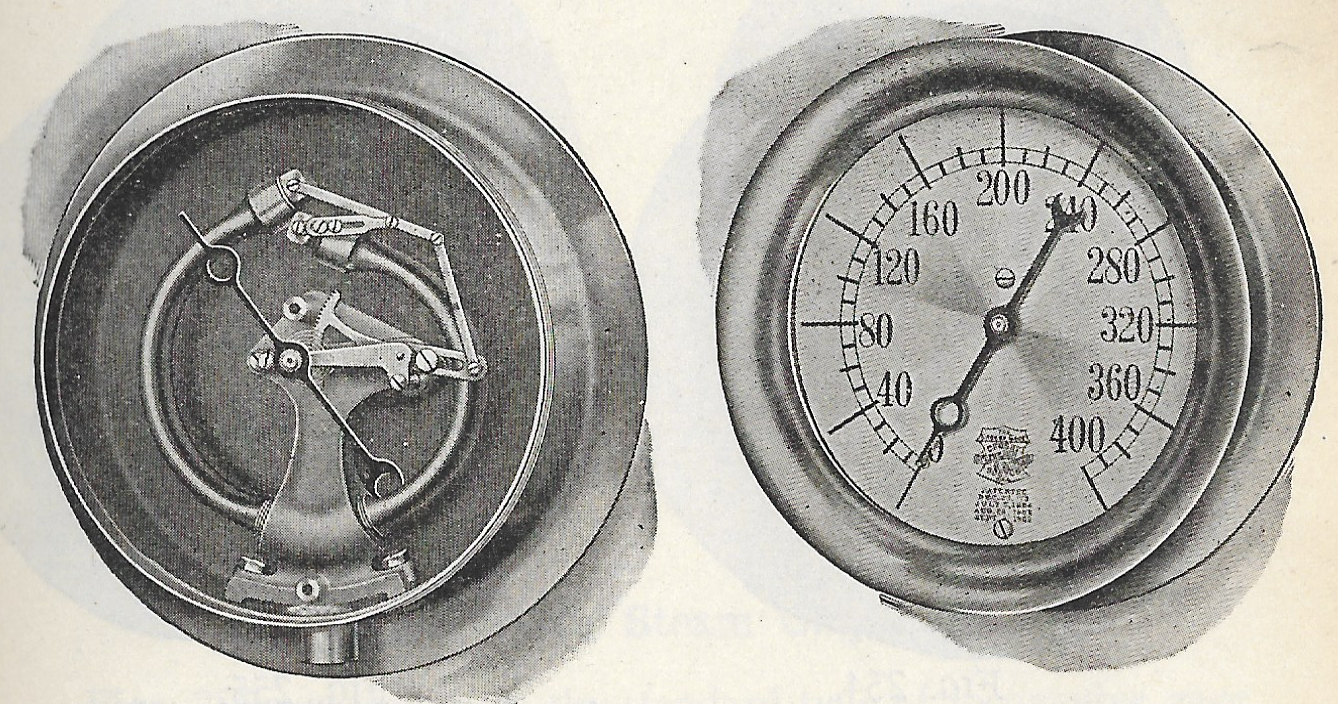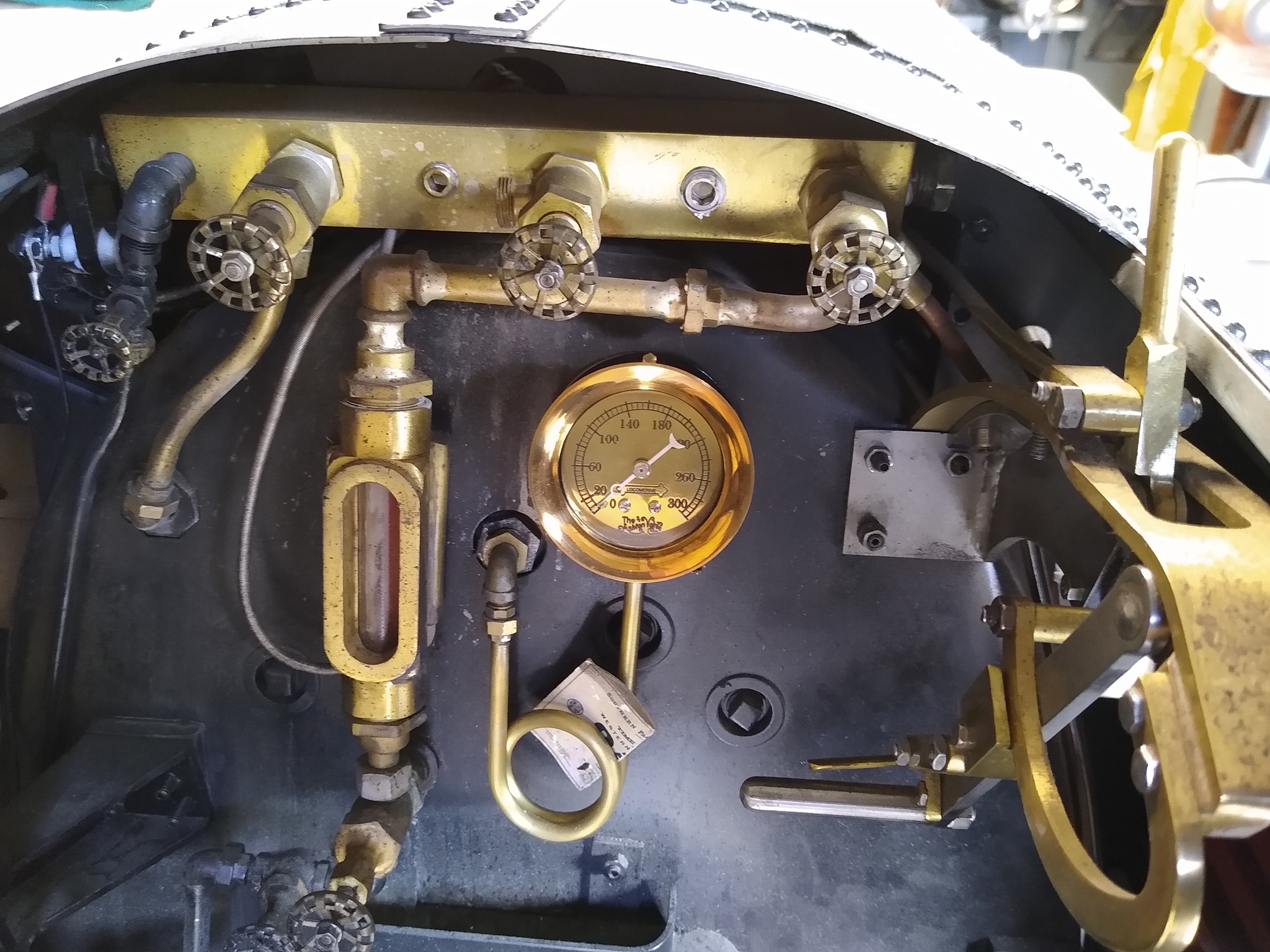
Updated: 3/19/2024 US Format
Condensing loops radiate heat to condense live steam. The surface area of a loop is greater than a straight pipe which is important for radiating heat and the rounded travel path increases steam flow resistance further cooling down the steam. The pipe should also be sensibly narrow further reducing it's ability to retain heat. Condensing loops also have more tolerace for expansion and contraction than shorter pipes, this property can be taken advantage of to allow different expansion between two parts that are connected by the loop.
Steam pressure gauges work by using thin walled spring tubes that bend outward to move a connected needle. The distance that they bend is proportional to the pressure and a dial can be attached to accurately tell the pressure.

However the spring tubes are inherently more fragile than the rest of the components exposed to steam and so they need to be protected from it. To accomplish this a condensing loop is put in the pipe running to it so steam condenses and water collects in the pipe and fills the spring tubes creating a boundary between the steam and spring tubes.

Hydrostatic lubricators required the condensation of steam to function. To this end hydrostats typically have a bolbus dome to help heat radiate and extra length is put into the pipe feeding live steam to the hydrostat. Sometimes this is just an extra long pipe with a curve but a condensing loop can also be used and will be especially necessary if the distance between the fittings is short.
Long Curve |
Condensing Loop |
|---|---|
|
|
|